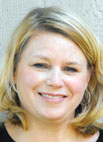 When Tom Leatherman says he is the best thing that ever happened to Kathy Bonneson, she smiles that smile all of us men know means, “Yeah, right.” This must be the reason they have a lively relationship.
When Tom Leatherman says he is the best thing that ever happened to Kathy Bonneson, she smiles that smile all of us men know means, “Yeah, right.” This must be the reason they have a lively relationship.
Kathy relocated to Boone County from Iowa and came to her 1,500-acre farm with her late husband in 1981. They had decided to move their herd of registered Charolais to a warmer climate and chose Arkansas. The Bonnesons purchased their farm and went to work.
Kathy said, “It was tough when we first came down here because it was during the depression of ’81. We were just getting our feet on the ground when my husband died.”
When Kathy’s husband was killed in the car accident in 1992, she had to make some tough decisions. She decided to keep the place and work it on her own. In order to make ends meet, over the years she’s worked off the farm. Kathy said, “I used to do some accounting for Tindle’s and I worked in Branson as an x-ray tech at Skaggs for about 10 years.” She also worked at a local truck stop for awhile. She said, “Used to be that I could work at the truck stop, second shift, get up at five in the morning and mow hay till one o’clock in the afternoon, take a shower, go to work until 11 or so. At 40 I could do it; now, no.”
In the midst of Kathy’s work and more work, she met Tom at the sale barn in Harrison, Ark. They’ve been together ever since. With the help of their hired man, Edwin Barnes – whom they both say is the best thing that ever happened to them – they run the ranch today.
With two herds, one registered Charolais and the other a commercial cow/calf operation, they run around 400 to 500 head. They sell their commercial herd at the sale barn in Harrison and their registered cattle off the ranch.
About their cow/calf operation, Kathy said, “We wean at 7 months. A few will go in straight off their mothers. The majority of them we wean and background them anywhere from 60 days to 6 months.”
Tom and Kathy cut their own hay. They bale around 300 to 400 square bales and over 2,000 round bales.
Asked if they are able to stockpile feed by rotating it so they don’t have to feed in the winter as much, Kathy replied, “Just about the time you think you can, it quits raining. Or the neighbor’s bush hog sets the field on fire for you.”
By utilizing conservation practices, suggested by the National Resources Conservation Service, Tom and Kathy rotate their cattle in cross-fenced fields. Kathy said, “We are very big on rotating our animals, and we switched to high-tensile fencing panels, instead of using regular electricity.” NRCS has advised Tom and Kathy about fencing and water conservation. A creek runs all the way through the 1,500 acres, and the agency helped them with digging wells and fencing off the creek.
Tom said, “To be in the cattle business, it’s gotta be in your guts or you’re not gonna make it. You have to sacrifice a lot just to stay in that business… Kathy has sacrificed tremendously to hold this place together.”







